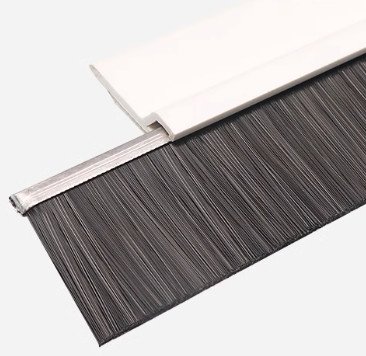Both the door bottom brush and seal strip can serve to seal doors, preventing cold, hot air, and noise from entering the room through the gaps under the door, thereby improving the room’s insulation and soundproofing effects. They each have their own advantages and disadvantages, and the choice between them mainly depends on your actual needs and the installation environment.

Door Bottom Brush:
Advantages:
- Good elasticity and adaptability, which can well accommodate the unevenness between the door frame and the floor.
- Good sealing effect, which can effectively prevent the intrusion of cold and hot air and noise.
Disadvantages:
- The installation is relatively complex, requiring fixing with nails or glue.
- The lifespan is relatively short due to the material of the brush being prone to wear.
Seal Strip:
Advantages:
- Easy to install, simply placed between the door frame and the floor without the need for additional fixing.
- Good sealing effect, which can effectively prevent the intrusion of cold and hot air and noise.
- Less prone to wear and tear, and has a relatively longer service life.
Disadvantages:
- Limited scope of application, mainly suitable for sealing between the floor and the door frame.
- Poor elasticity, which may affect the sealing effect in the case of uneven floors.
In summary, if the gap between your door frame and the floor is relatively smooth, the seal strip would be a better choice. If the floor is uneven, the door bottom brush might be more suitable. At the same time, if you value the convenience of installation and service life, the seal strip might be more suitable. If you prioritize the sealing effect, the door bottom brush might be a better fit.